

December Trading
Deals Are Live!
Save on Global+, data access,
and add-ons.
See All December Deals

Black Friday
Nov 28-Dec 31
11 days : 0 hours
50% OFF Global+ Quarterly
+ 50% OFF Data (3 months)

Cyber Monday
Dec 1 - Dec 31
11 days : 0 hours
60% OFF Global+ Monthly
+ Data (1 month)

Add-on Deals
Dec 1 - Dec 31
11 days : 0 hours
50% OFF
Add-ons

New Year Sale
Dec 26 - Jan 1
5 days : 0 hours
30% OFF Global+ Lifetime
*Data not included
Education
October 14, 2024
SHARE
The Influence of Market Participants: Forces Behind Price Movements

In the world of financial markets, prices are in a constant state of flux,
influenced by the decisions of market participants and the ever-shifting
external landscape.
In this article, we will understand how market participants—institutional
traders, retail investors, high-frequency traders, and market makers lead to
price discovery while dealing with external and internal factors.
We’ll also explore the impact of geopolitical tensions, which can send
shockwaves through indices and commodities, and dive into the intriguing
concept of ‘buy the rumor, sell the news,’ challenging our understanding of
market dynamics. So, let’s dive right in.
Unpacking the Influence of Market Participants
A typical financial market comprises several key players, including
institutional traders, retail traders, high-frequency traders (HFTs), and
market makers. Each group possesses unique characteristics and trading
patterns. Let’s delve into their profiles and examine how they shape price
dynamics using real-world examples.
|
Market Participants |
Meaning |
Trading Behavior |
Contribution to Price Dynamics |
Real-world Scenario |
|
Institutional Traders |
|
|
|
|
|
Retail Traders |
|
|
|
|
|
High-Frequency Traders (HFTs): |
|
|
|
|
|
Market Makers |
|
|
|
|
The Factors Driving the Influence of Market Participants on Prices
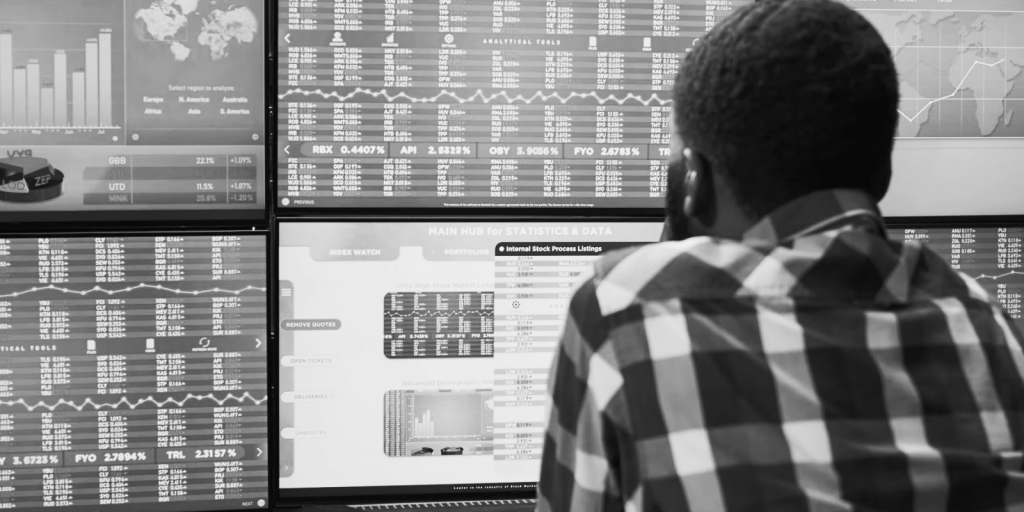
Now that we’ve explored various market participants, their trading behavior,
and their impact on pricing dynamics, let’s discover how market participants
influence the process of discovery in several ways.
The Weight of Order Size: How Significant Trades Sway Prices
Large trades, often referred to as “block trades,” have the potential to
significantly sway prices and trigger a series of reactions in the market.
Let’s begin with understanding the meaning and origin of block trades:
|
What Are Block Trades? |
Why Are Block Trades Executed? |
|
|
The Butterfly Effect – Created by Block Trades
In financial markets, a significant block trade sets off a chain reaction of
smaller trades. This happens because of other market participants reacting
to the initial large order. This cascade effect is known as the butterfly
effect and leads to notable price movements.
How does this happen?
Let’s understand how the butterfly effect unfolds in the financial markets:
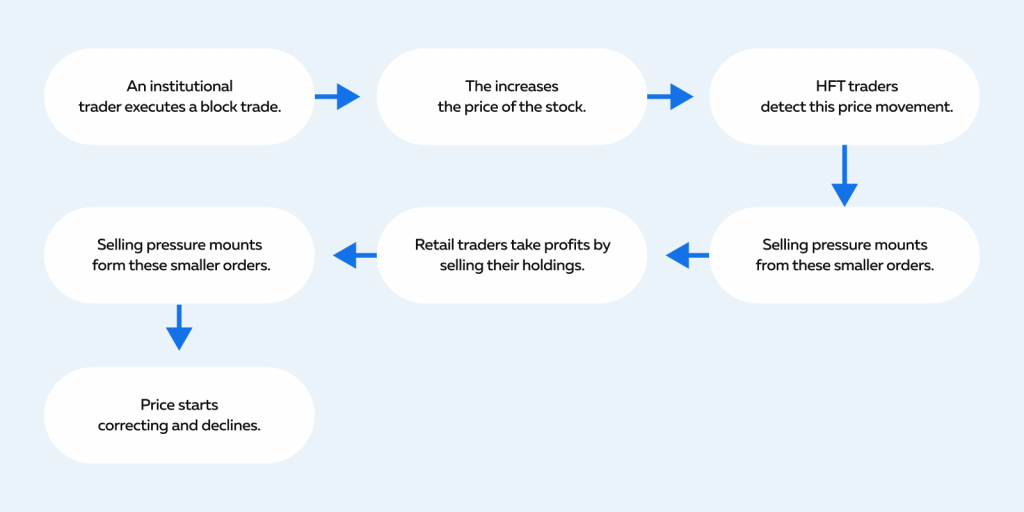
Front-Running and Anticipation of Large Orders:
Front-running is a practice where market participants predict that
institutional investors will make big orders. They do this to try and make a
profit, and this can result in changes in prices.
But how does it work? Let’s see how front-running happens in financial
markets:
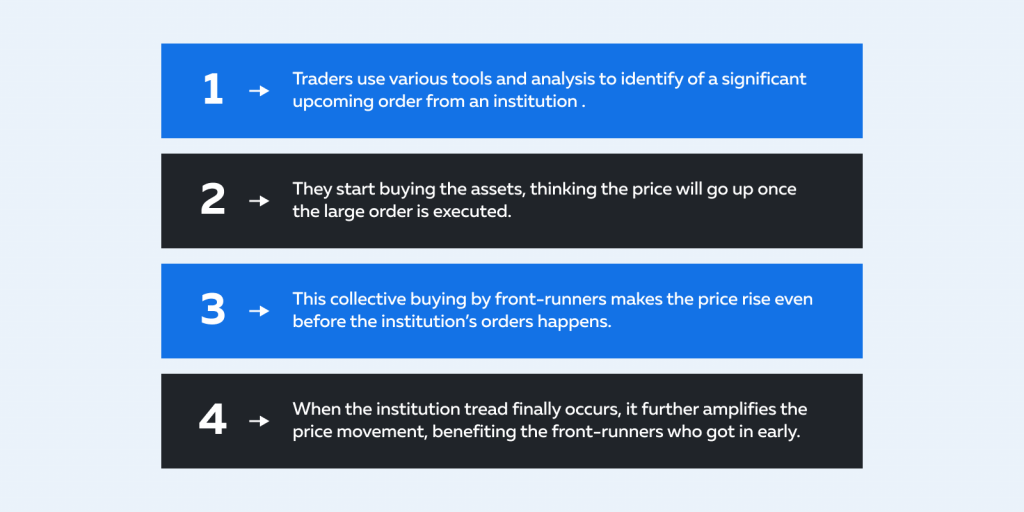
Disclaimer: Regulatory bodies often monitor and seek to prevent practices,
such as front-running to maintain market integrity.
Liquidity and Price Movement: A Delicate Balance
Liquidity plays a crucial role in determining price stability. It represents
the ease with which assets can be bought or sold without causing a drastic
price change. A sudden increase or decrease in liquidity directly influences
the process of price discovery. Let’s delve deeper into the relationship
between liquidity and price movement:
High Volume of Trades and Volatile Price Changes
A high volume of trading activity in a market implies increased
participation from various market participants, such as retail traders,
institutional investors, and high-frequency traders.
If this surge in trading volume is not met with corresponding liquidity, it
can lead to volatile price changes. This is because liquidity is essential
to absorb the buying and selling pressure generated by these trades. Without
enough liquidity, even relatively small trades can result in significant
price swings.
Let’s understand through a real scenario.
-
There is a low-liquidity stock that is not frequently traded.
-
Suddenly, a large institutional trader decides to sell a significant
number of shares. -
In a market with insufficient liquidity, there are not enough buyers
to absorb this large supply. -
This sell-off can lead to a rapid and substantial price drop.
Sudden Withdrawals of Liquidity and Rapid Price Drops
Liquidity can be abruptly withdrawn from a market when many participants
simultaneously decide to pull out their offers to buy or sell an asset. This
can occur due to various reasons, such as:
-
News events
-
Economic uncertainties, or
-
Shifts in market sentiment
This sudden withdrawal leads to rapid price drops because fewer buyers are
willing to purchase the asset. This forces the sellers to accept lower
prices to execute their trades. This downward pressure on prices can
intensify as more participants try to exit their positions, resulting in a
cascading effect.
Let’s understand the domino effect of liquidity withdrawals through a real
scenario:
Imagine a situation in the stock market where a particular tech company has
been performing exceptionally well, but during the 2007–2008 financial
crisis, the company’s earnings for two quarters missed expectations by a
significant margin.
Have a look at the y-o-y comparison of quarterly earnings (in million
dollars) through the chart below:
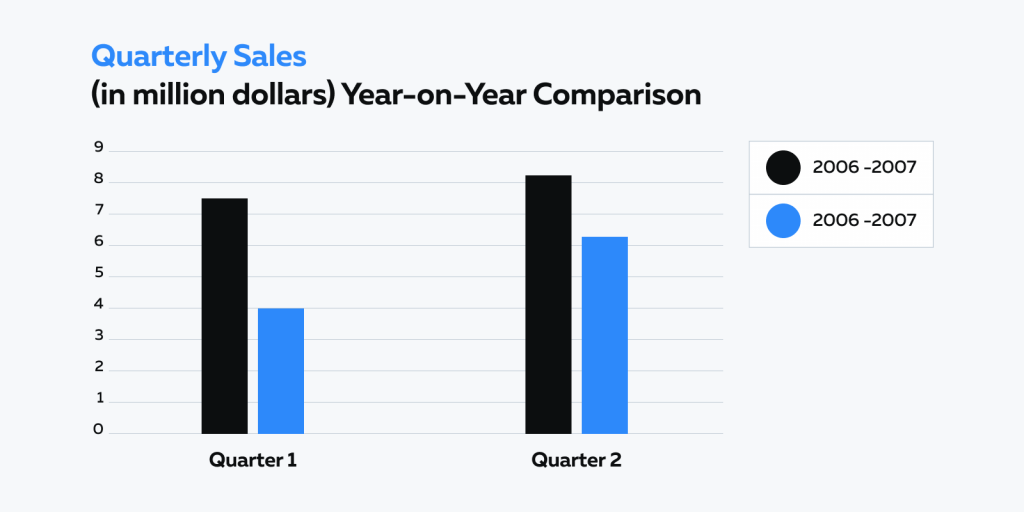
This news caught many market participants off guard, leading to a sudden
shift in sentiment. Several buyers withdrew their buy offers, which suddenly
reduced liquidity. What followed was a simultaneous price decline, as
evident in the graph below:
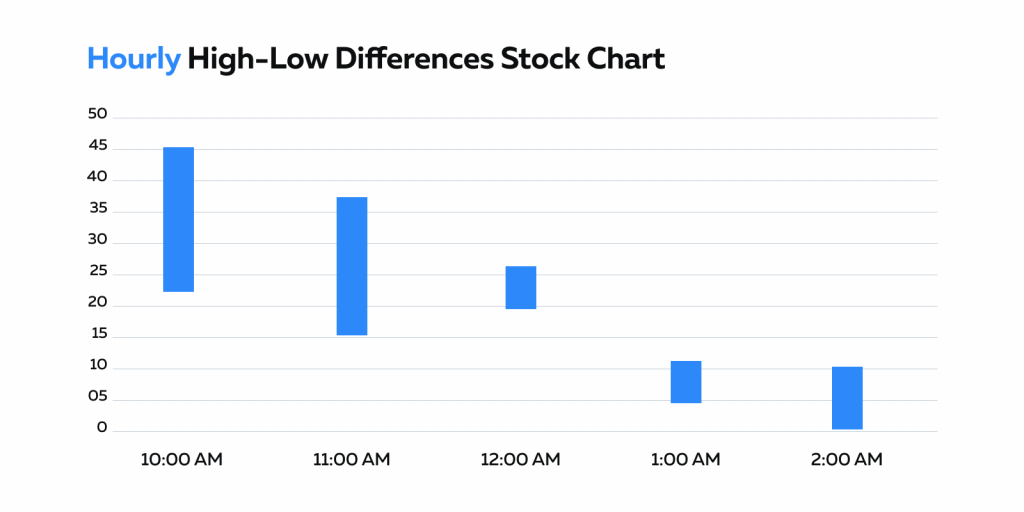
What Can Investors Learn From The Above Scenario?
-
Diversification is Key:
-
Overreliance on a single tech company, no matter how well it’s
performing, exposes investors to significant risk. -
Diversifying across different asset classes can mitigate this
risk.
-
-
Market Sentiment Matters:
-
Even strong companies can be impacted by broad market sentiment.
-
Pay attention to macroeconomic trends and the overall market
environment.
-
-
Financial Crises are Unpredictable:
-
The 2007-2008 financial crisis was largely unforeseen by the
majority of investors. -
Be prepared for the unexpected and have contingency plans in
place.
-
-
Maintain Long-Term Perspectives:
-
Don’t consider short-term fluctuations.
-
A long-term investment horizon can help ride out turbulent
periods in the market.
-
-
Avoid Herd Mentality:
-
Don’t follow the crowd blindly.
-
Sometimes, contrarian thinking can be a valuable strategy during
market uncertainty.
-
Temporal Factors: Trading Windows and Market Sentiment’s Influence on Prices
Temporal factors commonly refer to the timing of trades and market sentiment
during specific events. They play a significant role in shaping price
dynamics in financial markets.
Let’s explore the implications of temporal factors in different market
scenarios:
-
Trading during Market Open or Close:
-
The opening of a trading session, accompanied by the release of
overnight news and order accumulations, results in increased
activity and volatility. -
Analogous to market openings, the closing minutes of a trading
session can also witness intensified activity as traders rush to
execute last-minute orders. -
This flurry of activity can create price spikes and increased
market volatility.
-
-
Collective Sentiment During Major Announcements
-
Events like Federal Reserve interest rate decisions, corporate
earnings reports, or economic data releases can have a
substantial impact on market sentiment. -
Market participants react to these announcements based on their
expectations and interpretations of the news. -
The collective sentiment prevailing during major announcements
can swiftly swing prices.
-
-
Trading Halts and Post-Resumption Frenzy:
-
Trading halts are temporary suspensions of trading.
-
They are triggered to prevent panic selling or buying.
-
After a trading halt is lifted, there is often a frenzy of
trading activity as participants rush to adjust their positions. -
This post-resumption frenzy leads to significant price
volatility as traders respond to the events precipitating the
trading halt and seek to establish new positions.
-
The Impact of External Stimuli: From News to Global Events
External stimuli, such as news events and global occurrences influence
market participants’ perceptions and actions, often leading to significant
price movements. Let’s illustrate this with a real-scenario and its
aftermath:
-
A pharmaceutical company announces a breakthrough in the development
of a new drug. -
This news swiftly catapults the company’s stock price.
-
Investors, foreseeing significant future profits, rush to grab
shares. -
A buying frenzy unfolds as investors compete to own a piece of the
company.
The Aftermath
-
The actual impact of breakthrough development on the company’s
financials would not materialize immediately. -
As a result, once the news is digested and the initial excitement
subsides, the stock undergoes a correction phase.
Geopolitical Tensions and Their Effects:
Geopolitical tensions, exemplified by trade wars involving major economies
like the United States and China, significantly affect financial markets.
Participants closely monitor developments and react to:
-
Tariffs
-
Trade agreements
-
Other policy changes
These tensions lead to market volatility, as uncertainty about the future of
international trade influences investment decisions.
Buy the Rumor, Sell the News
The adage “Buy the rumor, sell the news” captures the tendency of market
participants to anticipate news events and adjust their positions
accordingly. This anticipation leads to price movements in the lead-up to an
event. However, once the news is officially revealed, the market’s reaction
may not align with earlier expectations, leading to a reversal in prices.
For example,
-
Prior to an earnings announcement, traders buy a stock in
anticipation of strong results. -
This collective anticipation drives its price higher.
-
When the actual earnings report was released, it failed to meet the
elevated expectations. -
Investors sold their positions, causing the stock’s price to
decline.
In this way, the market’s reaction often underscores the delicate balance
between anticipation and reality, highlighting the profound impact of
collective market sentiment on price movements.
Conclusion
In this article, we explored how institutional traders, retail traders,
high-frequency traders, and market makers each influence prices in their
unique ways. Also, how the weight of order size can trigger cascades of
reactions and how sudden liquidity withdrawals can lead to rapid and
dramatic price changes.
Understanding these dynamics and the implications of temporal factors is
paramount for efficient trading. In our next article, we will delve even
deeper into how market participants influence price movements.
Looking to gain a deeper understanding of market participants and their
influence on price movements? Arm yourself with advanced tools and insights
at Bookmap. Sign up today to enhance your trading strategies.
Start with Bookmap Now →